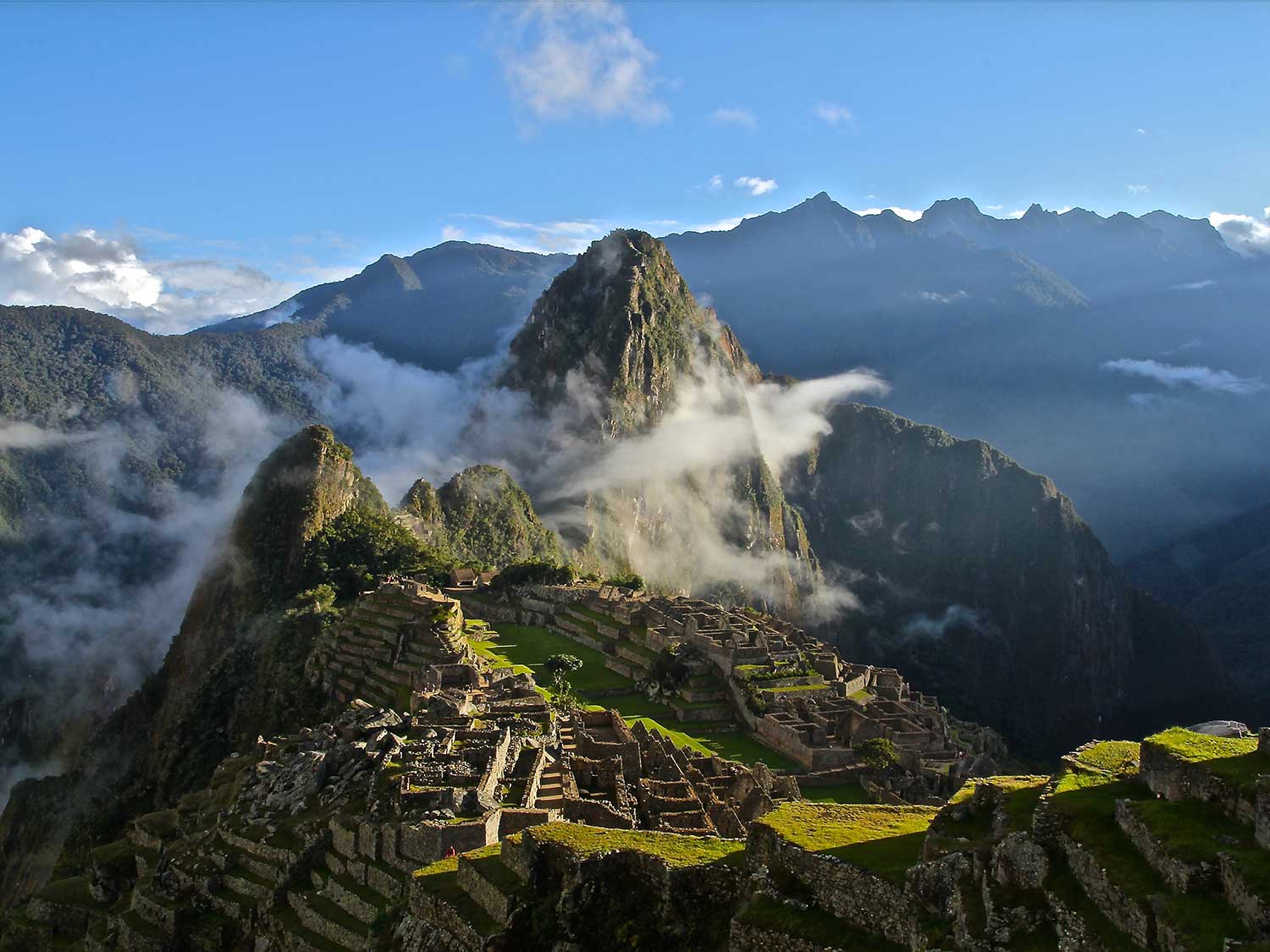How Azamara Reinvented The Thrill Of Visiting Machu Picchu
The luxury cruise company’s land programs are adventurous and stylish, and there is no better way to experience this mysterious modern wonder.
More than 4 million people visit Peru's Machu Picchu every year. But I've never wanted to be one of them.
Likely because I was put off years ago by a friend who came back with tales of an arduous days-long hike; bugs the size of her hand; and... let's just call them "impromptu sanitary stops" in the middle of jungle. I'm someone who considers air-conditioning and indoor plumbing essential, so you couldn't convince me that the payoff of seeing the most popular attraction in South America IRL could outweigh the inconvenience and effort involved.
Until I realized that it didn't require any.
I found this out when I was invited to see the Inca-built citadel—a UNESCO World Heritage Site since 1983, and named one of seven new world wonders in 2007—by the cruise line, Azamara. The opportunity is just one of more than a thousand pre- and post-cruise land tours, designed to immerse visitors in the history and culture of the destinations they call on, and to connect passengers more intimately with the people who live there. Much more than your typical shore excursion, the curated experiences are intimate (groups average between 12 and 18 people) and in-depth, led by experts in their field and lasting as long as six days.
Even though I'm younger than Azamara's typical 60-something passenger, I appreciated how the program makes visiting Machu Picchu relatively effortless, allowing you to make the most of what is, for most of us, a once-in-a-lifetime experience. Unlike my friend, who hiked the Inca trail for four days (a 26-mile slog at altitudes of up to 13,000 feet) before finally reaching the ancient city's Sun Gate, I'd be arriving at the citadel the Azamara way–without even breaking a sweat.
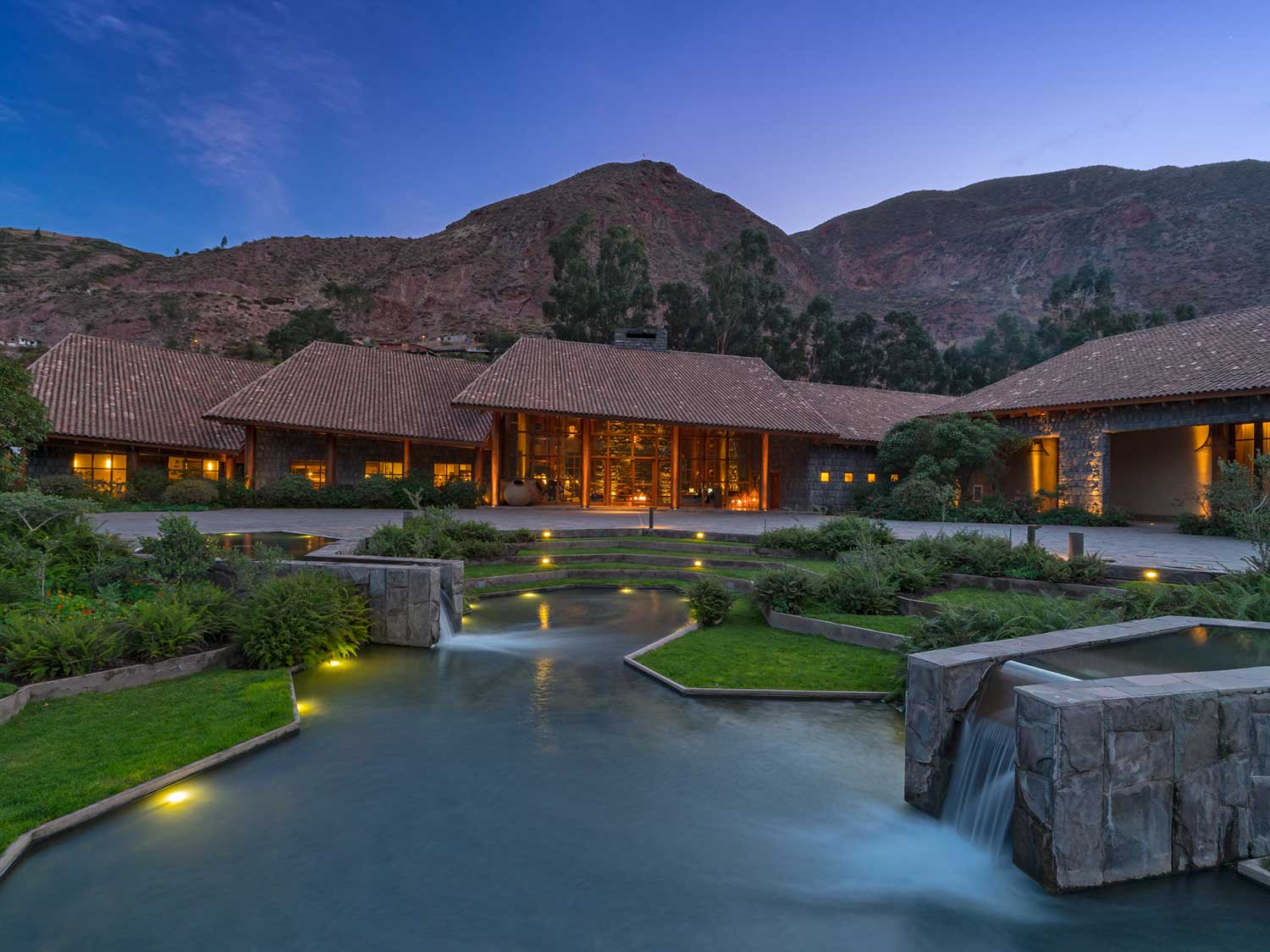
While most visitors fly into Cusco (altitude: 11,000 feet) and go directly to Machu Picchu (roughly 8,000 feet above sea level) with little time to acclimatize to the thinner air, Azamara does things differently. From Cusco we drove 90 minutes straight to The Sacred Valley, where we were cosseted at Tambo Del Inka, a luxurious, lodge-like hotel that would be our base for a two-day exploration of the Andean region that comprises Cusco and Machu Picchu.
Fortified by cups of coca mate (a chamomile-like tea that's a popular local remedy for altitude sickness) we "flatlanders" ticked off the Sacred Valley "must-sees," including the mysterious agricultural ruins at Moray and Chinchero's Center for Traditional Textiles. There we learned how local women dye and weave wool to make clothing, and squealed in delight during our first meet-and-greet with Peru's iconic and impossibly cute alpacas.
But the main attraction was still to come.
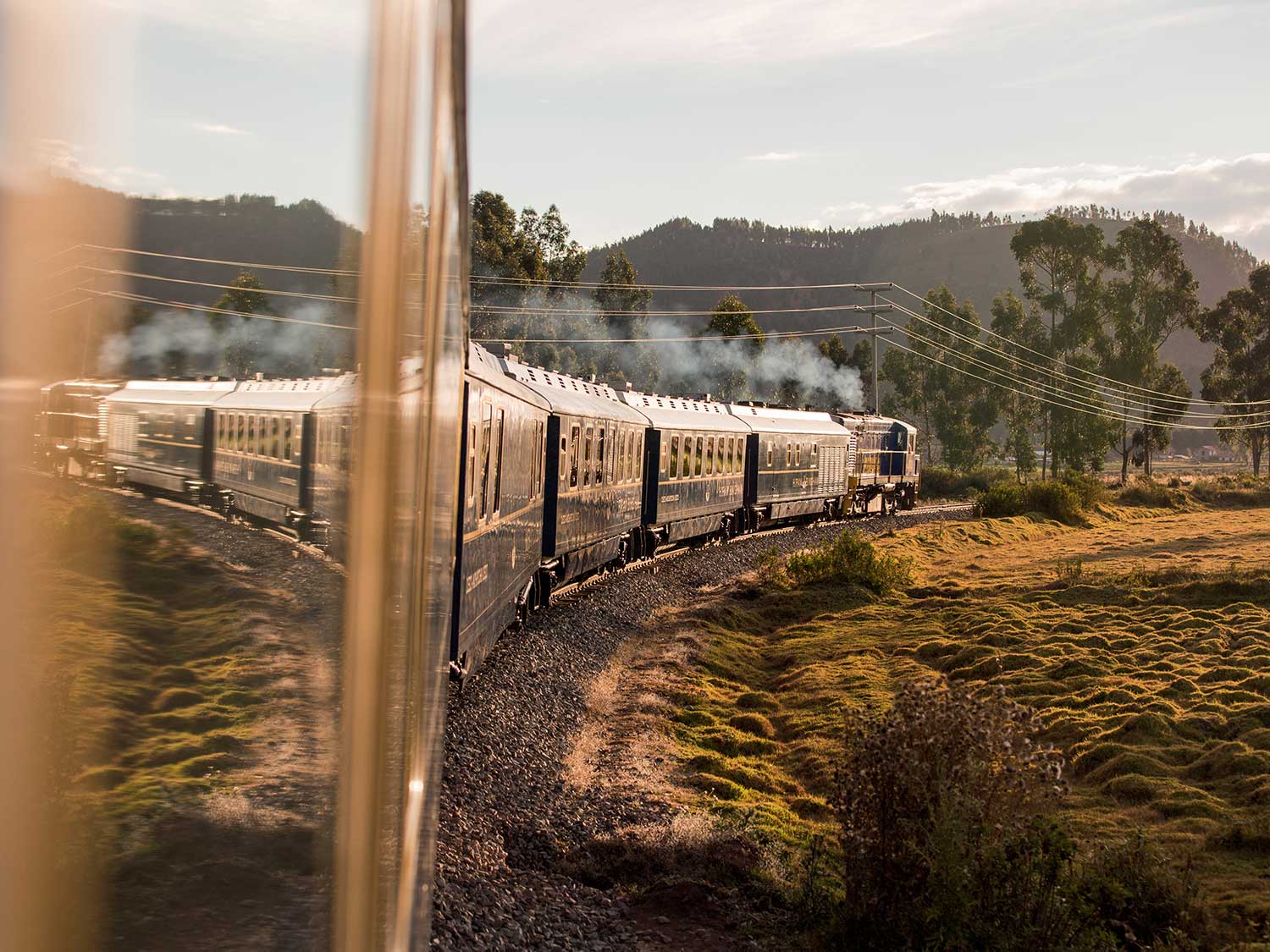
Our Machu Picchu adventure began not on a well-worn hiking trail but at Ollantaytambo station, where we boarded the Belmond Hiram Bingham train which would take us to the Lost City of the Incas. Although there are several you can take, Belmond's train is, hands-down, the fanciest way to get to Machu Picchu—and, at about $900 roundtrip per person for the 90-minute journey, also the priciest. All shiny brass, gleaming wood and sparkling crystal, the opulent 84-passenger Pullman looks and feels like the Orient Express circa the 1930s—minus the murders!
The price tag includes a three-course brunch (or dinner, on the return), open bar and live music in the lounge. Chugging through the countryside, the rapids of the undulating Urubamba followed alongside like a frothy Willy Wonka-esque river of chocolate milk. We chatted and snapped photos of the changing landscape as waiters expertly navigated the narrow aisles, offering Pisco Sours (Peru's national drink) in festive clay cups. Take that, Inca Trail!
All too soon for the Pisco lovers on our tour (pro tip: altitude and alcohol don't mix!) we arrived at Aguas Calientes, a village about a 20-minute drive from Machu Picchu's entrance. Although the Hiram Bingham provides a shuttle bus from the station to the citadel and a guide for all 14 of its passengers, Azamara guests have a dedicated guide to interpret the historic site. And ours, Carlos Solaligue, was stellar, giving us essential background info as he weaved his way through the substantial but thankfully thinning lunchtime crowds. (Hiram Bingham guests arrive as most visitors, who started their day trips in the wee hours of the morning, are heading back to the train station—another Azamara advantage.)
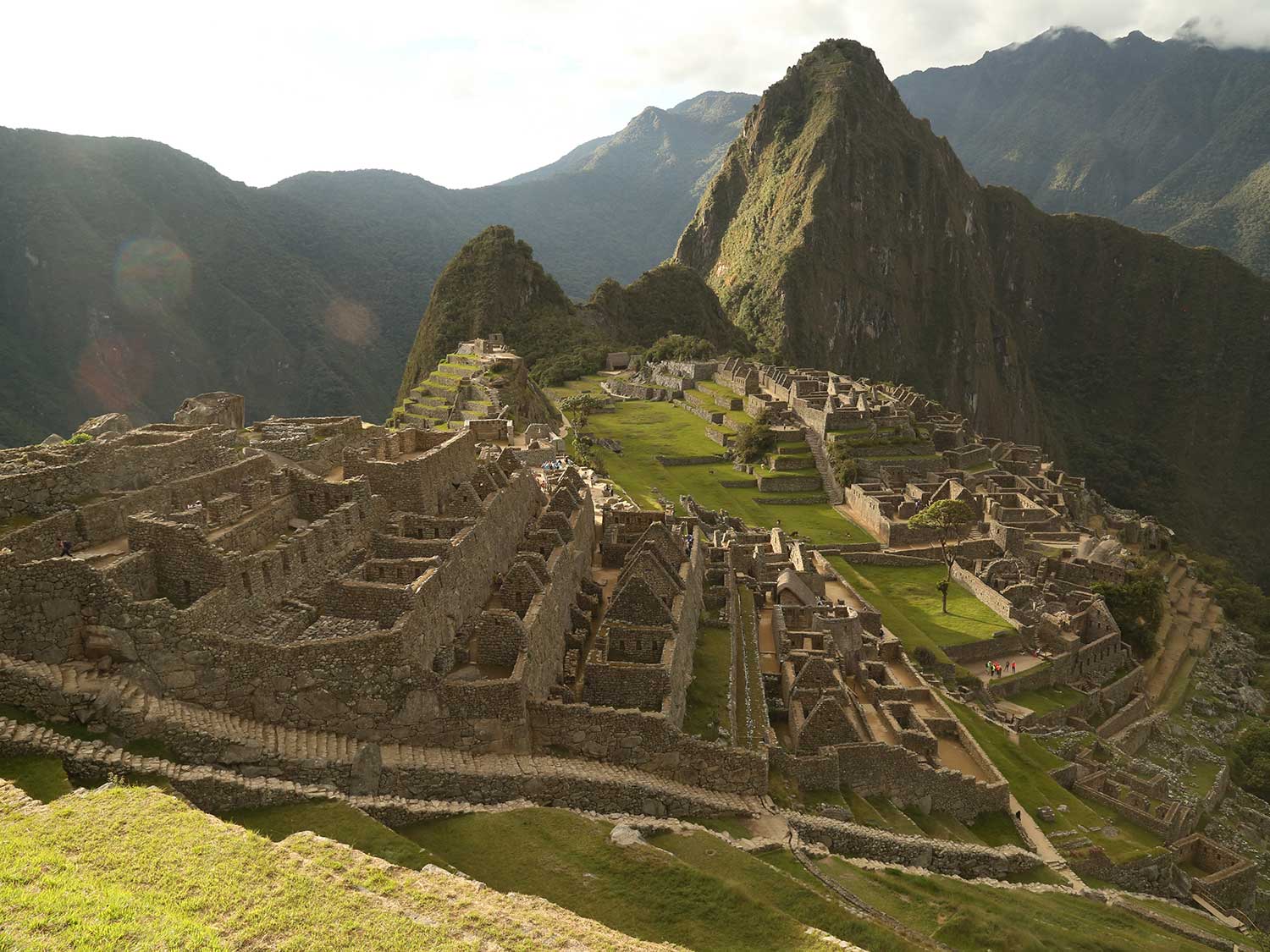
But, to be honest, it took a minute before I could pay attention to anything Carlos had to say because I was so taken aback by the citadel's imposing beauty. The only Inca city not destroyed by Spanish conquistadores in the 16th century, Machu Picchu ("old mountain") was established 200 years earlier, and home to about 1,000 Inca until it was abandoned sometime in the 1530s. British explorer Hiram Bingham happened upon its overgrown ruins in 1911, and it's safe to say that since then, the world has been rightfully fascinated by its mere existence.
Here in the cloudforest, which gets as much as much as 90 inches of rain every year, the air is dewy and fresh. Cottony clouds sail silently over the jagged mountain peaks that encircle the valley, which the mighty Urubamba (from this height a mere squiggle in the landscape) snakes through on its way from the Amazon.
Carlos explains that the compound is divided into two sections: Those iconic stepped terraces, where the Inca farmed herbs, medicinal plants and, surprisingly, flowers. And the lower urban area, with living quarters built from granite carved into stones with nothing but rudimentary hand tools. Looking at the centuries-old buildings, which would be at home in The Shire in The Lord of The Rings, I can't even fathom the ingenuity, time and back-breaking work it must have taken to construct this city.
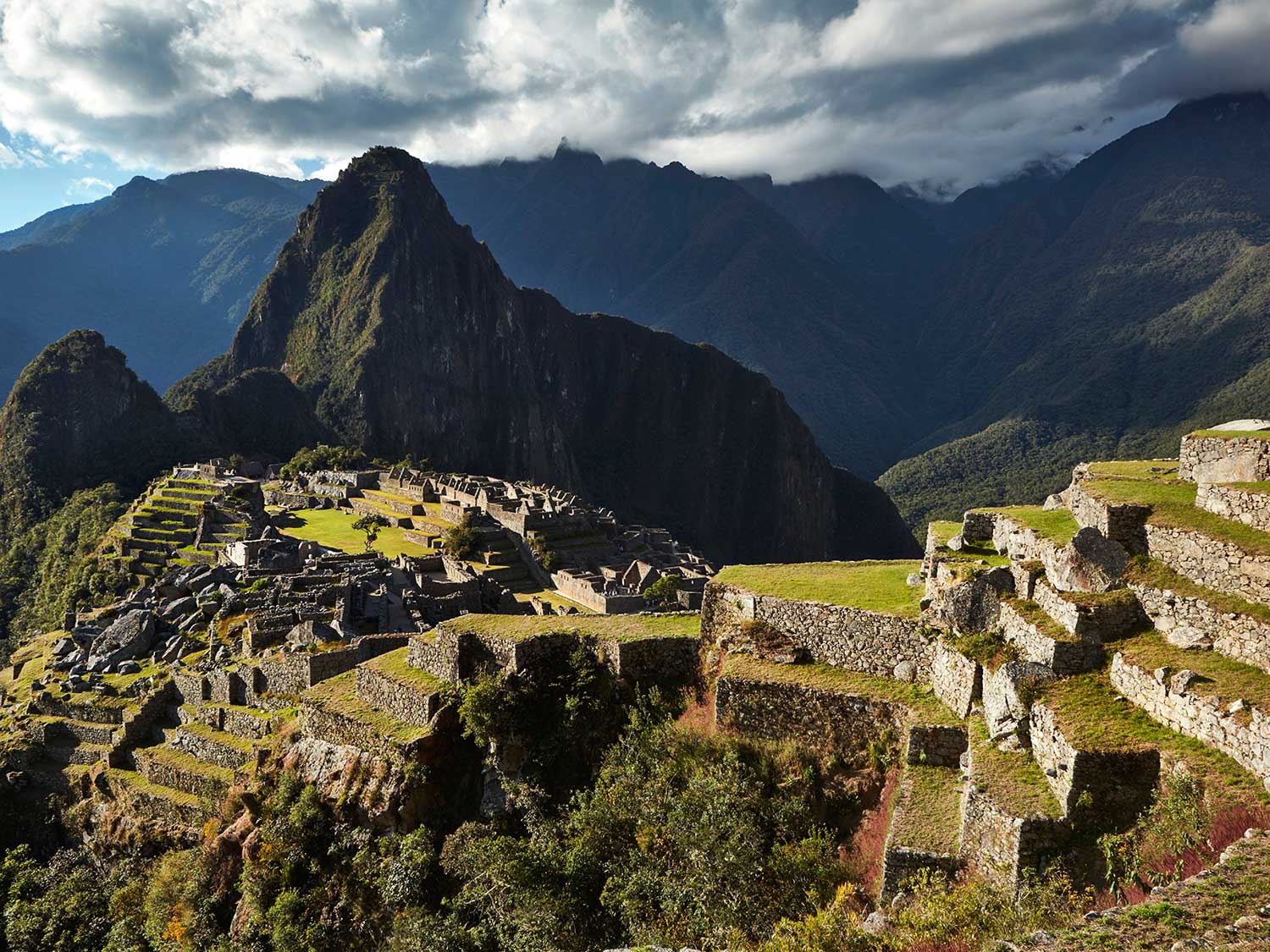
As we wander along steep stone steps and grassy paths, all you can hear is our breath, labored from the altitude, and our gasps of awe as one Instagram-worthy view gives way to another. On the upper terraces, even the most camera-shy in our group concede to pose for photos with mist-crowned mountains as a backdrop. On the lower areas, no one can resist snapping photos with the llamas that live here, strolling nonchalantly despite the presence of more than 2,500 daily visitors. And cameras come out once again when we stumble upon a marriage proposal amid the stony structures. (Spoiler: She said yes!)
I could stay here all day, just taking in the view, people-watching or perhaps hiking any of several mountain routes. But, to minimize wear and tear to the site, park rangers request that visitors limit their time to three hours. (Currently there's no system in place to enforce that, but the lack of on-site bathrooms works pretty effectively.) As I diligently shoot photos and video, trying to capture Machu Picchu's magic for friends not lucky enough to be here before we leave, Carlos appears at my shoulder. "Take photos with your camera, Sarah," he says. "But don't forget to take them also with your mind."
Centuries after it was constructed, Machu Picchu remains an enigma. How exactly did the Inca build it? How long did it take? Why did they abandon the city, which was never discovered by the Spanish? And the biggest Machu Picchu mystery yet: Why did it take me so long to visit?
